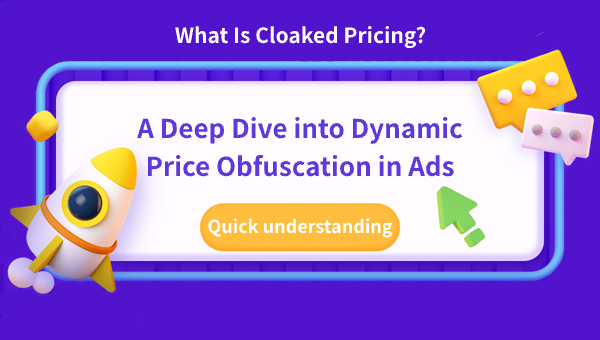What Is Cloaked Pricing? A Deep Dive into Dynamic Price Obfuscation in Ads
What Is Cloaked Pricing?
Cloaked pricing refers to the practice of displaying different prices based on user identity, IP address, referral source, or behavioral attributes—often used in ad campaigns to show compliant or promotional prices to reviewers while keeping real conversion prices hidden from scrutiny.

Why Do Marketers Use Cloaked Pricing?
To avoid ad rejections on platforms like Meta or Google
To segment users by GEO and show localized prices
To deliver custom pricing for affiliates
To test various pricing structures without platform interference
Common Use Cases
Displaying “safe” prices to crawlers or platform reviewers
Showing higher prices to high-intent users, lower prices to low-bounce users
Adjusting price points during split testing without triggering compliance filters
How Is Cloaked Pricing Implemented?
User fingerprinting: Combine IP, User-Agent, cookies, and language headers
Redirect-based cloaking: Show different landing pages based on logic conditions
Front-end dynamic rendering: Inject prices after page load via JS or API
Is Cloaked Pricing Ethical or Legal?
The answer depends on use. If it's used to deceive platforms or users, it's clearly unethical and may violate laws. But when used to localize, test, or protect prices from bots, it becomes a strategic layer in performance advertising.
Choosing a Reliable System
Platforms like AdCloaking.com offer robust cloaked pricing logic engines that support:
Country-specific rules
Platform reviewer detection
Real-time rendering control
Conversion audit logs
Final Thoughts
Cloaked pricing is no longer a “black hat” tactic—it’s a sophisticated survival tool in aggressive advertising environments. Explore how it can transform your ROAS and campaign stability by visiting adcloaking.com and get started with advanced protection today.
